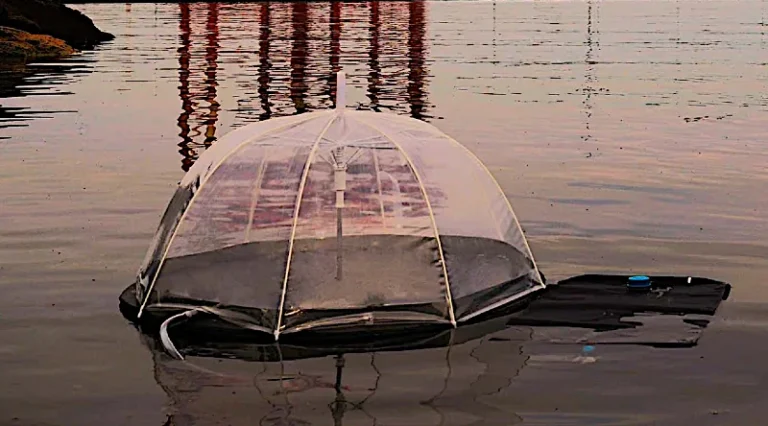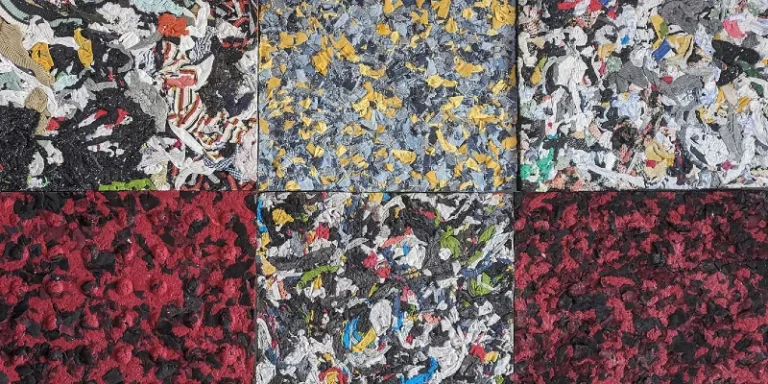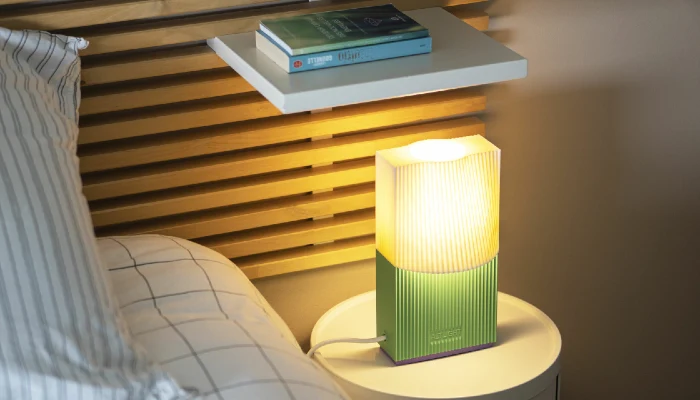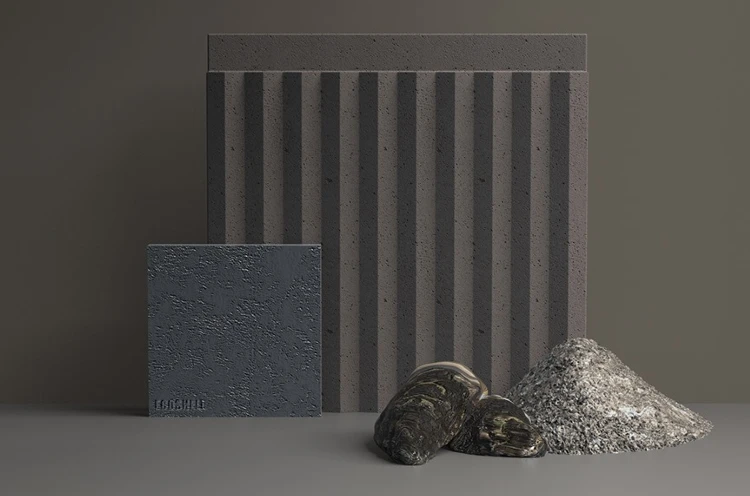The tech industry has a plastic problem. Every year, millions of computer accessories—keyboards, mice, headsets—are discarded, contributing to the growing mountain of plastic waste in landfills. This environmental issue demands innovative solutions, and Logitech is stepping up to the challenge by pioneering the use of sustainable materials in its products.
One such material is cork, an ancient resource being reimagined for modern technology. Logitech’s new approach isn’t just about reducing plastic use, but about redefining the lifecycle of tech accessories with eco-friendly alternatives.
Logitech, a leading producer of computer peripherals, is integrating environmentally friendly materials like composites, biomaterials, and recycled components into its production process. This shift could significantly change the look and feel of computer hardware. Is the \$16.5 billion dollar company truly committed to sustainable design and development, or is this just another tech company looking to get some publicity via well-publicized green claims?
We’re not sure yet. Right now, we don’t care what their motivation is, as long as they do it. And so far, they are.
The first example is a new headset primarily made from cork. Designed by Logitech’s in-house team, this headset replaces the typical plastic with compressed cork for the earpads and a composite of cork and recycled plastic for the headband. The natural light brown hue of the cork marks a stark departure from the conventional appearance of most computer accessories.
“Plastics offer many benefits in terms of durability, aesthetics, and performance,” explains Jasper Phua, Logitech’s global head of color, material, and finish design. “However, as we start considering materials that are more sustainable, we open the door to more alternatives. This becomes a catalyst for innovation.”
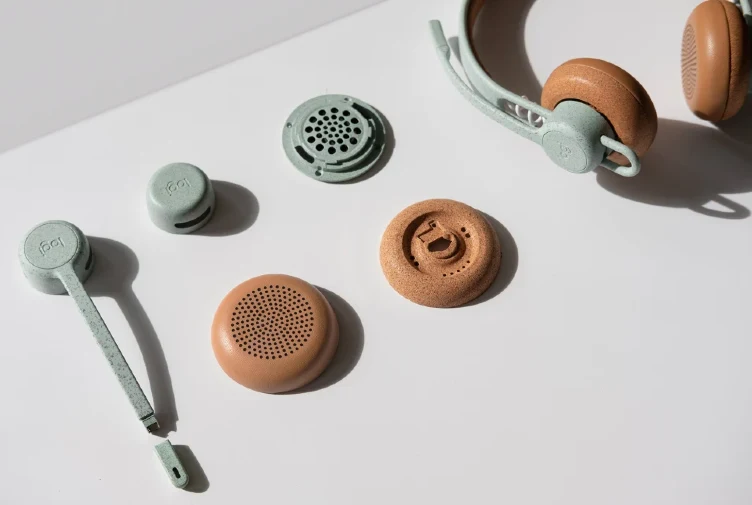
Cork as a Sustainable Material
Currently in the prototype phase, this cork-based headset demonstrates how new materials can transform product design. Compressed cork has a different tactile quality compared to injection-molded plastic. For example, biomaterials might need to be thicker to match plastic’s durability, affecting the product’s form factor. Phua points out that experimenting with new materials can redefine even the most familiar tech accessories.
“For designers, this opens up new aesthetic avenues,” Phua notes. “There is also a shift in consumer expectations regarding the look and feel of electronic products.”
Logitech’s design teams are experimenting with cork to create peripherals with lower carbon footprints. Other prototypes include cork keyboards and mice.

The Path Towards Reduced Plastic Use
While cork-based products aren’t on the market yet, Logitech has significantly reduced virgin plastic use. Approximately two-thirds of its globally sold products are made from recycled plastic. “That’s about 3 million products shipped weekly,” Phua says.
The use of recycled materials has influenced the aesthetics of Logitech’s products, with a color palette featuring diverse tones. A cork headset might not be available soon, but cork-colored versions are a possibility.
“Biomaterials and renewable materials are exciting and new,” Phua says. “But there’s still much to explore with recycled materials.”
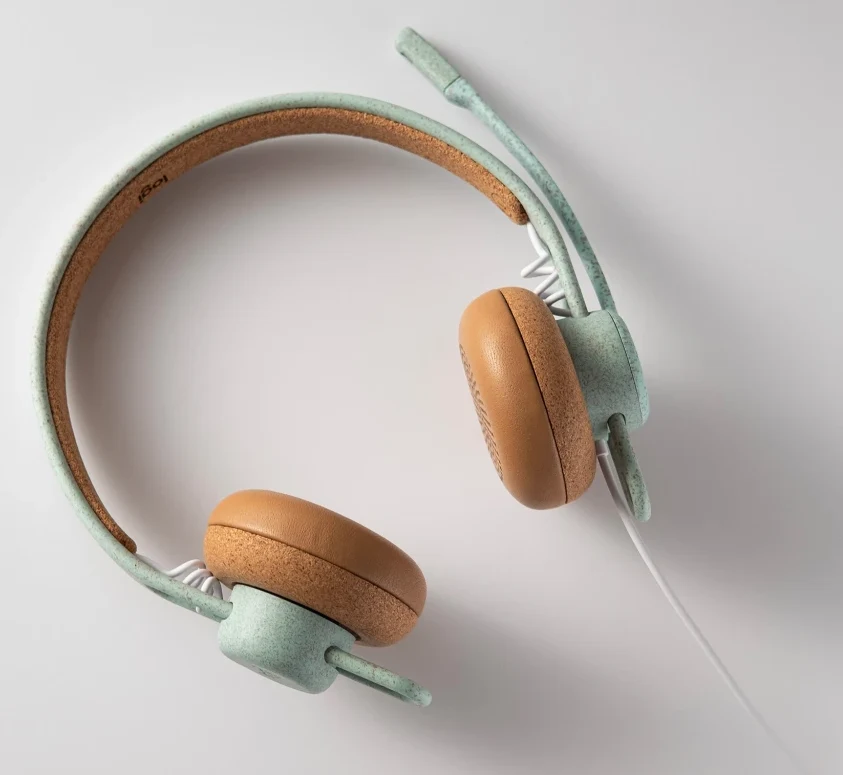
Understanding Cork’s Sustainability
Cork is harvested from the bark of cork oak trees, primarily found in the Mediterranean region. These trees are unique because their bark regenerates, making cork a renewable resource. Cork oak trees are typically harvested every nine years, with each tree capable of producing cork for over 200 years.
The harvesting process is sustainable and eco-friendly. Removing the bark doesn’t harm the tree, allowing it to continue growing and absorbing carbon dioxide. This contributes to carbon sequestration, which helps mitigate climate change.
And then there’s the fact that cork is biodegradable, breaking down naturally and reducing environmental pollution. Its durability and excellent insulation properties make it suitable for various applications beyond computer peripherals.
Advantages of Using Cork
More To Discover
- Electric Scooter Concept Aims to Overcome EV Challenges with Automated Battery Swap System
- Geothermal Drilling Speeds Up by 70%, Costs Slashed by Half Since 2022
- Exposed: The Climate Benefits of Cookstove Carbon Offsets Have Been Overstated By 1,000%
- Former School Teacher’s Bio-Tool Transforms Red Cabbage Waste into a Simple Water Quality Tester
- Renewable Resource: Cork is harvested sustainably from cork oak trees, which regenerate their bark.
- Carbon Sequestration: Cork oak trees absorb CO2, helping combat climate change.
- Biodegradability: Cork decomposes naturally, unlike plastic, reducing environmental waste.
- Durability and Insulation: Cork is durable and has excellent insulation properties, making it versatile.
By integrating cork and other sustainable materials, Logitech reduces its environmental impact and sets a new industry standard. This approach demonstrates how traditional materials can be reimagined to meet modern sustainability goals.
Logitech’s use of cork in computer peripherals signals a shift towards sustainable design. As the company continues to innovate, it paves the way for eco-friendly materials to become the norm in tech.









